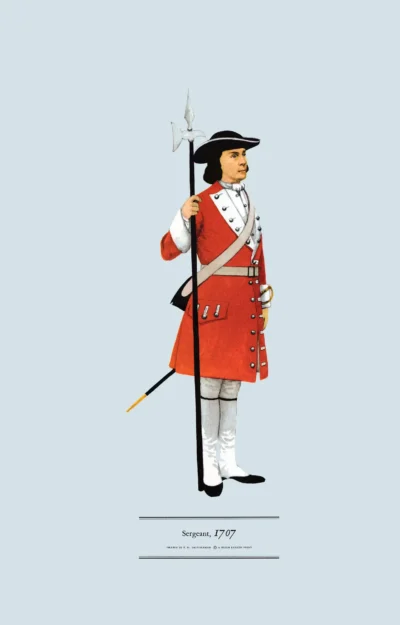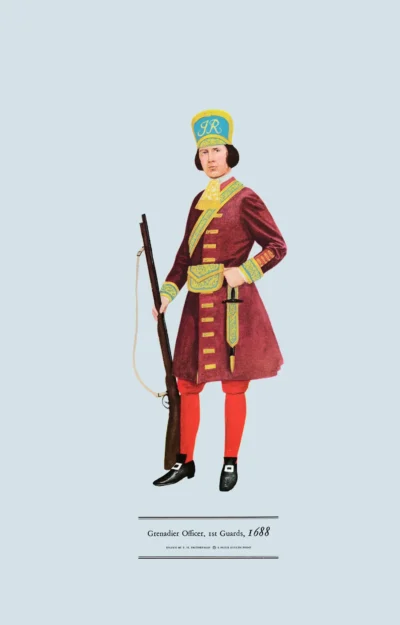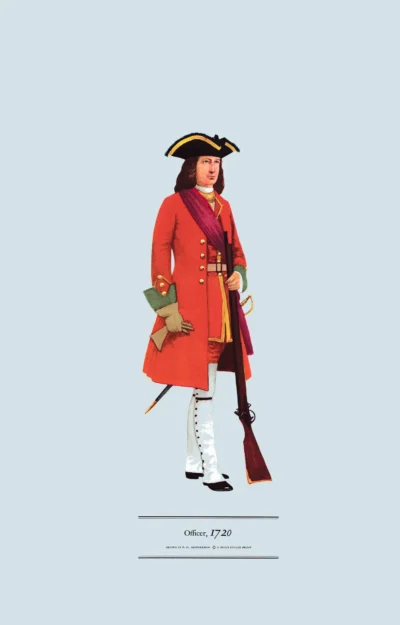Grenadier Officer, 1st Guards, 1688 (Grenadier Guards)
£12.50Named The Grenadier Guards after the Battle Waterloo, 1815; Part of the Guards Division (scroll down for a more detailed Description)
Published 1965 by © Hugh Evelyn Limited; drawn by Colonel Philip Henry Smitherman (1910-1982), Royal Corps of Signals
Size: c. 24.5 x 37.5 cm [9 ½ ″ x 14 ½ ″] (may vary slightly from printers’ cut 50 years ago)
Printed on on medium cardstock weighing 144 g/sm2 faced in light greyish blue (RGB c. d4e1e8)
Print is STANDARD size – shipping is the same for 1 to 10 prints (based on largest print size in your order) – see Shipping & Returns.

 Sergeant, Royal Scots, 1707
Sergeant, Royal Scots, 1707 


